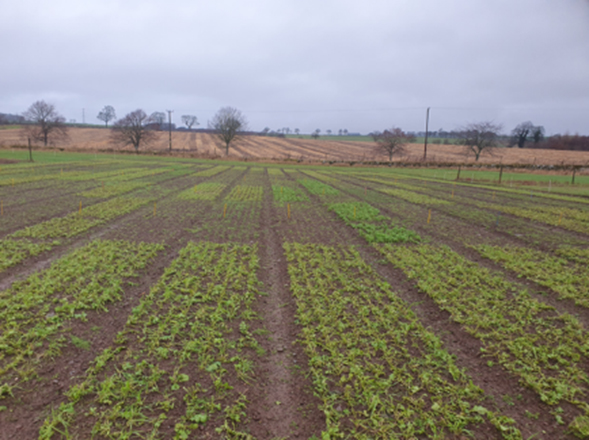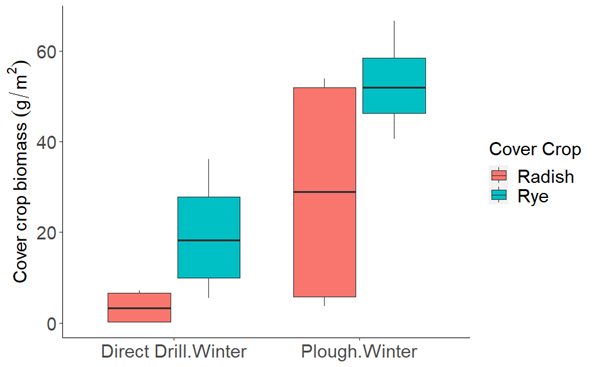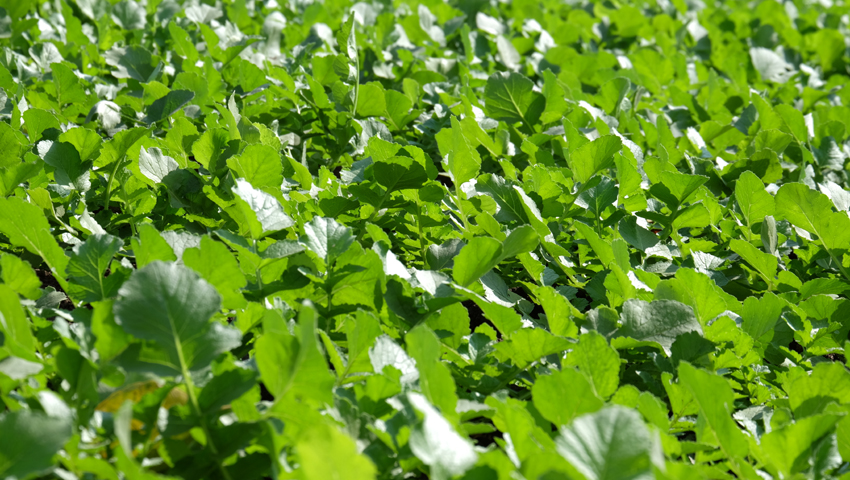By Dr Tracy Valentine, research leader in plant/soils interaction at The James Hutton Institute
Cover crops are one way to increase diversity on farm and potentially have multiple benefits both above and below ground. These benefits include adding carbon and nitrogen to the soil, improving soil structure, capturing nutrients and passing them to the next crop, and reducing weed burden, depending on the specific cover crop species or mixture grown.
Winter cover crops are established after the main crop harvest in August through to September (in the northern hemisphere) and are grown through the winter season before being destroyed usually by frost, herbicide or mowing.

Fifteen cover crops sow in fully replicated plot trial at the Grieves House Tillage Trial field site.
The Scottish Government funded “Crop Improvement for sustainable production in a changing environment”, and the “Healthy Soils” projects are exploring the difficulties in establishing cover crops under different climatic conditions and under different management conditions.
Climate change projections of Scotland’s weather include an increase in average temperature across all seasons, with warmer and drier summers and milder and wetter winters. However, there is still significant local variability in both temperatures and rainfall event patterns across the different months of the year.
These variations could have several impacts on cover crop implementation. For example, while projections suggest that central eastern areas of Scotland will become warmer it also projects it to be much drier in the August-September cover crop sowing window, potentially affecting germination rates.
Mixed cover crop
Further north, the projections become much more uncertain, but the issue of quickly fading light for plant growth will still remain whatever the weather brings. There are also farm management interactions. So far data has been collated on multiple species of cover crops, from both the literature, a multiple species plot trial and from Grieves House Tillage Trial (GHTT).
In the 2022-2023 growing season, cover crop biomass produced (measured in March) in the GHTT was significantly lower in the no-till plots than in the inversion plough plots for both the radish and rye cover crops sown by more than 50%.
Reduction in above ground cover crop biomass under direct drill compared with no-till, in two cover crops species sown in Grieves House Tillage Trial (GHTT).
Cover crops within no-till systems are key approaches to climate change mitigation, through reduced fuel and attempts to increase carbon sequestration. So while biomass is only an indicator of cover crop success, reduced effectiveness in these systems of particular cover crops species is important information.
Data gathered on responses to management will be combined with seed germination metrics, plant temperature and light growth data in models that link to climate change projections for different regions in Scotland, to help assist the uptake of cover crops.

Reduction in above ground cover crop biomass under direct drill compared with no-till, in two cover crops species sown in Grieves House Tillage Trial (GHTT).
